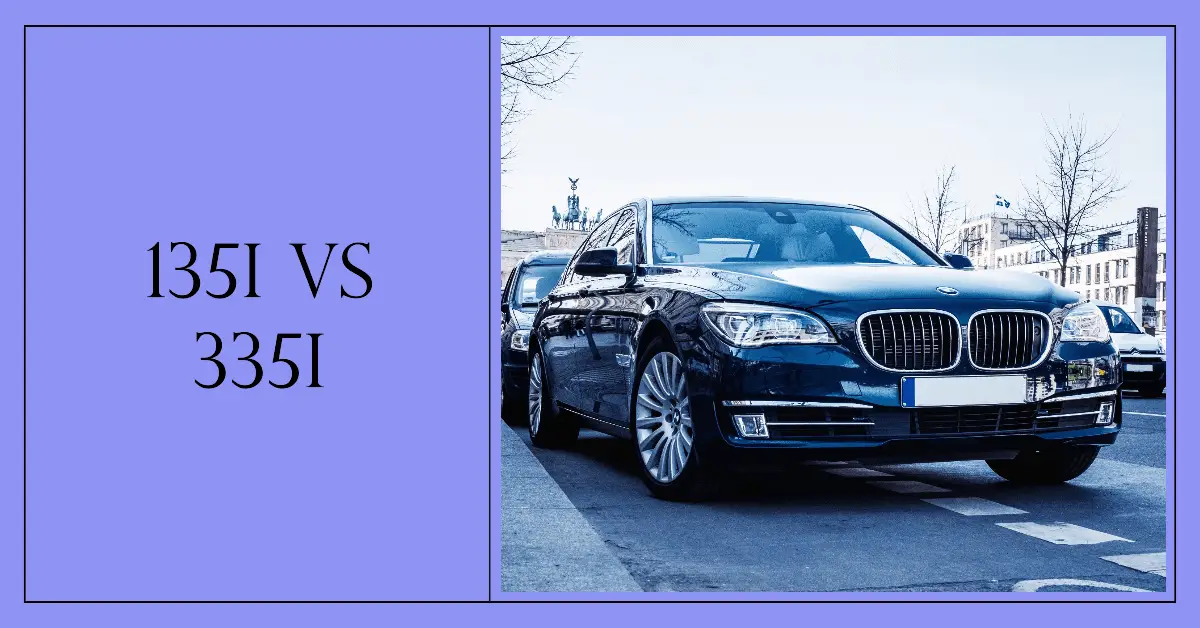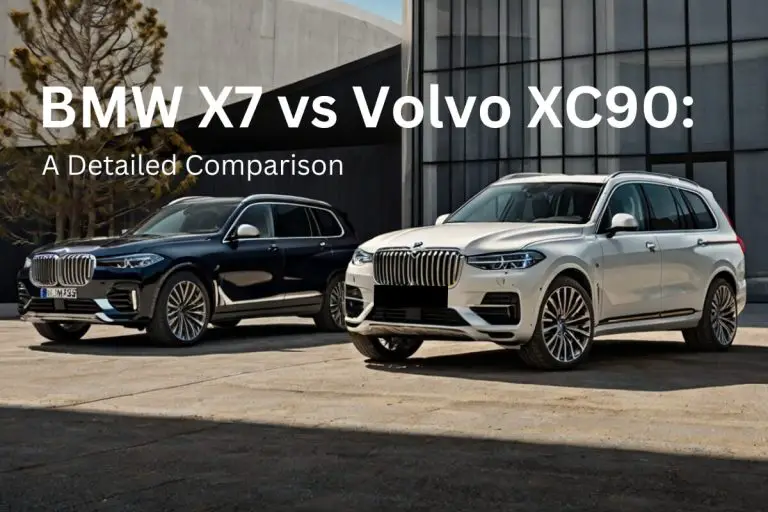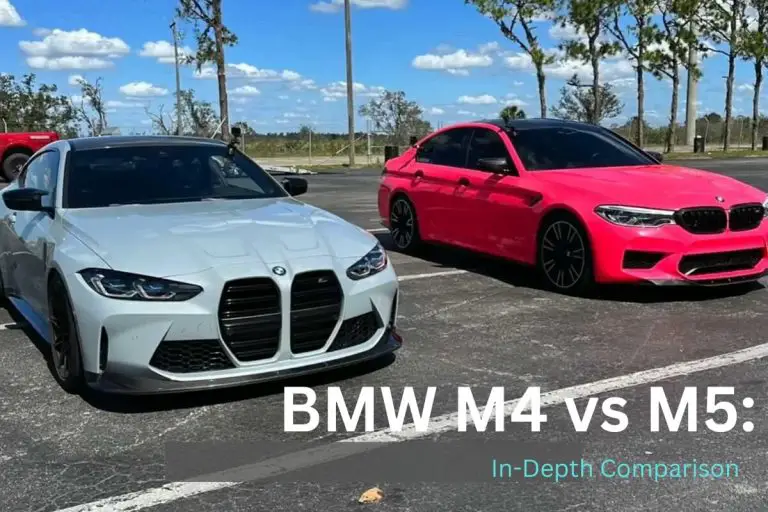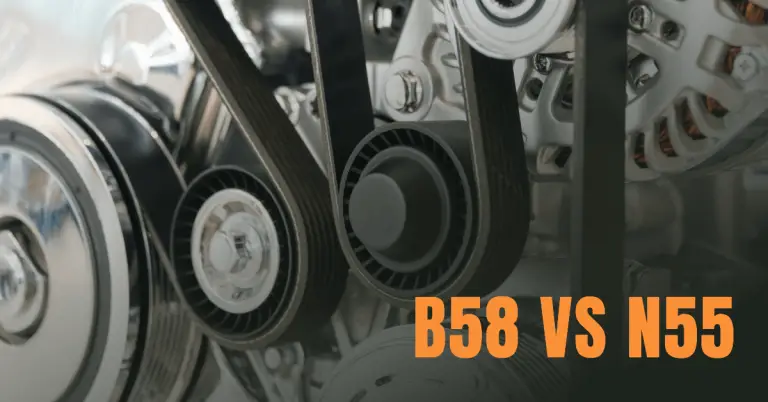BMW 135i vs 335i: Which Turbo Inline-6 is Right for You?
If you’re a driving enthusiast looking for an affordable way into a turbocharged BMW, two models you’ll likely consider are the entry-level BMW 135i and the legendary BMW 335i.
But how does the coupe and sedan 135i compare to the 335i when it comes to performance, handling, practicality, and price?
While the 135i is lighter, slightly more agile, and a performance bargain, the 335i offers significantly more power, interior refinement, and everyday practicality to match its higher cost.
This article will compare the BMW 135i and 335i across dimensions including:
- Powertrain and performance
- Transmission options
- Handling and agility
- Interior space
- Standard and available features
- Fuel economy
- Pricing and value
We’ll help you decide which of these classic BMW turbo inline-6 models is the better match for your desires and budget.
Powertrain and Performance Comparison
The main difference between the 135i and 335i lies under the hood.
The 135i features BMW’s N54 twin-turbo 3.0L inline 6-cylinder engine, producing 300 horsepower and 300 lb-ft of torque in the 1 Series coupe and convertible. The sedan version was rated at 260 horsepower.
By comparison, the more powerful 335i packs BMW’s N54 twin-turbo 3.0L inline 6-cylinder engine tuned to deliver 300 horsepower and 300 lb-ft of torque in base models. In higher performance versions like the 335is, output is increased to 320 horsepower and 332 lb-ft of torque.
So while base horsepower is even, the 335i has an advantage in passing power and acceleration by providing more torque available lower in the rev range.
Translating this to performance, the 135i coupe accelerates from 0-60 mph in just 4.7 seconds. The sedan is slightly slower at 5.3 seconds 0-60 mph.
The 335i coupe reaches 60 mph in an even quicker 4.6 seconds, while the sedan does it in 4.8 seconds.
And with the increased torque, the 335i needs only 5.3 seconds to go from 60-100 mph, versus 6.1 seconds in the 135i.
So while the 135i is respectably quick, the 335i is noticeably faster, especially for passing maneuvers. This gives it a clear performance advantage.
Transmission Options: Manual vs. Automatic
One area where the 135i and 335i differ is in transmission options.
The BMW 135i comes standard with a 6-speed manual transmission. But a 6-speed automatic with paddle shifters is available as a $1,400 option.
By comparison, the 335i comes standard with a 6-speed manual in coupe models, while the 7-speed dual-clutch automated manual is standard in the sedan with a manual available as a no cost option.
So while both offer the option of a manual gearbox for purists, only the 135i can be equipped with a traditional automatic. The high-performance 335i uses the faster shifting automated manual transmission as standard equipment.
Handling and Agility: Light and Tossable vs. Stable and Planted
When it comes to handling prowess, both vehicles deliver an agile and responsive driving experience that makes enjoying twisty backroads a thrill.
However, there are some key differences that impact just how these cars handle.
First, the BMW 135i is smaller and over 300 lbs lighter than the 335i at around 3,500 lbs for the coupe.
This helps give the 135i extremely sharp reflexes and allows the driver to toss it around corners with great ease. It’s an absolute blast to drive aggressively on curvy roads.
By contrast, the 335i tips the scales at over 3,800 lbs. And while still nimble, the extra weight means it doesn’t change direction quite as eagerly.
On the flip side, the added heft provides the 335i a more solid, planted feel at speed. The steering is a bit less twitchy, providing a greater sense of high speed stability.
So while the 135i may offer slightly livelier handling, the 335i counterbalances this with a more refined stability that makes it a greater all-around daily driver.
Practicality: Passenger and Cargo Space
In terms of everyday practicality and accommodation, the BMW 335i holds some clear advantages.
Being the larger 3 Series, the 335i naturally offers more interior room and cargo capacity than the compact 1 Series.
Front and rear headroom are both increased by about an inch in the 335i, as is front legroom. This provides a noticeably more spacious feel up front and in the back seats.
The 335i also has a significant advantage in trunk space, offering 12 cubic feet compared to just 10 cubic feet in the 135i.
And with its larger overall dimensions, the 335i simply feels like a more substantial vehicle, while the 135i’s interior can feel a bit tight.
So for carrying passengers and gear comfortably, the more spacious 335i has a practicality advantage over its smaller sibling.
Interior Features and Options
Both vehicles offer attractive, driver-focused interiors with BMW’s characteristic premium ambiance. But there are some key differences in terms of standard equipment and available options.
The base BMW 135i comes decently well equipped with standard features like:
- Leatherette upholstery
- Automatic climate control
- 8-way power front seats
- Auto-dimming mirrors
- Rain-sensing wipers
However, the larger 335i offers additional standard equipment including:
- Leather upholstery
- Power moonroof
- Auto-dimming side mirrors
- Bluetooth and smartphone integration
When it comes to optional features and packages, the 335i offers more high-end upgrades like:
- Satellite navigation
- Heated/ventilated seats
- Premium Harman Kardon audio
- Comfort access keyless entry
- Active driving aids
This allows buyers to deck out a 335i with more luxury features and leading-edge tech.
By contrast, the options list on the 135i is more limited, keeping optional content to mostly aesthetic and appearance choices.
So while both models provide a satisfying driver-focused environment, the 335i offers more standard features and a wider array of upscale options.
Fuel Economy and MPG
Performance does come at a cost when it comes to fuel consumption in these powerful 6-cylinder BMWs.
The BMW 135i is rated at:
- 17 mpg city / 24 mpg highway with the 6-speed manual
- Slightly better at 18 mpg city / 25 mpg highway with the 6-speed automatic
Comparatively, the 335i returns:
- 17 mpg city / 26 mpg highway with the manual
- 18 mpg city / 27 mpg highway with the automated manual transmission
So real world fuel economy ends up being very similar between the two vehicles. You’ll be making regular gas station stops with either model if you tap into their potent turbo power.
Both require premium 91+ octane fuel for maximum performance.
Cost Comparison: Base Models vs Fully Loaded
When it comes to purchase price, the BMW 135i has a significant value advantage over the upscale 335i.
A base rear-wheel drive BMW 135i coupe with a manual transmission starts right around $35,000 MSRP. Add in the automatic transmission and you’re looking at a starting price around $36,500.
By comparison, the base rear-drive BMW 335i coupe with its high-tech dual clutch automatic transmission starts around $42,000 MSRP. Go for the manual gearbox and you’re still looking at over $40,000 to start.
And the price difference grows even further when equipping the vehicles with comparable feature content:
- A loaded BMW 135i with navigation, premium audio, sport styling upgrades and other options will top out around $45,000.
- A fully decked out BMW 335i with similar equipment can easily crest $55,000, and sometimes much higher.
So at both the value-oriented and luxury ends of the spectrum, the 135i maintains a solid price advantage of around $10,000 over the larger 335i.
This gives the 135i an appealing value equation. You still get a quick turbo inline-6 BMW coupe or sedan for tens of thousands below its more powerful big brother.
The extra performance, refinement, and status of the 335i will justify its higher cost for many buyers. But value seekers get an awful lot of driving excitement with the 135i before crossing the $40k and $50k thresholds.
Conclusion: 135i Offers Performance Bargain, But 335i Takes the Crown
In summary, the BMW 135i delivers an amazing bang-for-the-buck driving experience with its turbo inline-6 delivering sports car acceleration and agile handling in a small, tossable package.
It’s a performance bargain that represents an affordable entry point into BMW’s acclaimed turbo 6 engines.
However, the iconic 335i outweighs its little brother with significantly more power, everyday practicality and luxury features to match its higher cost.
While not as light and darty as the 135i, it’s a more refined and well-rounded performance machine. And offerings like the M-tuned 335is model take things to an even higher level.
So if you’re on a tighter budget but still want quick acceleration and nimble handling, go for the 135i. You’ll have a blast whipping around corners while saving thousands over its big bro.
But for buyers wanting absolutely epic turbocharged inline-6 performance with greater luxury and practicality, the BMW 335i reigns supreme even with its higher price tag.







